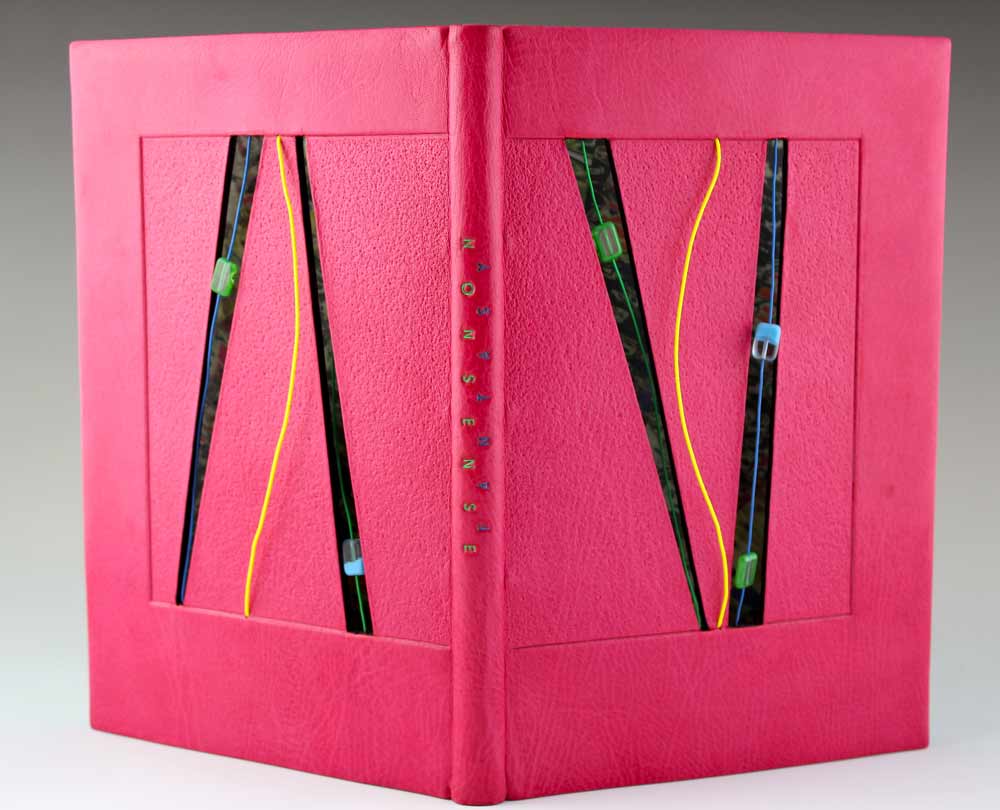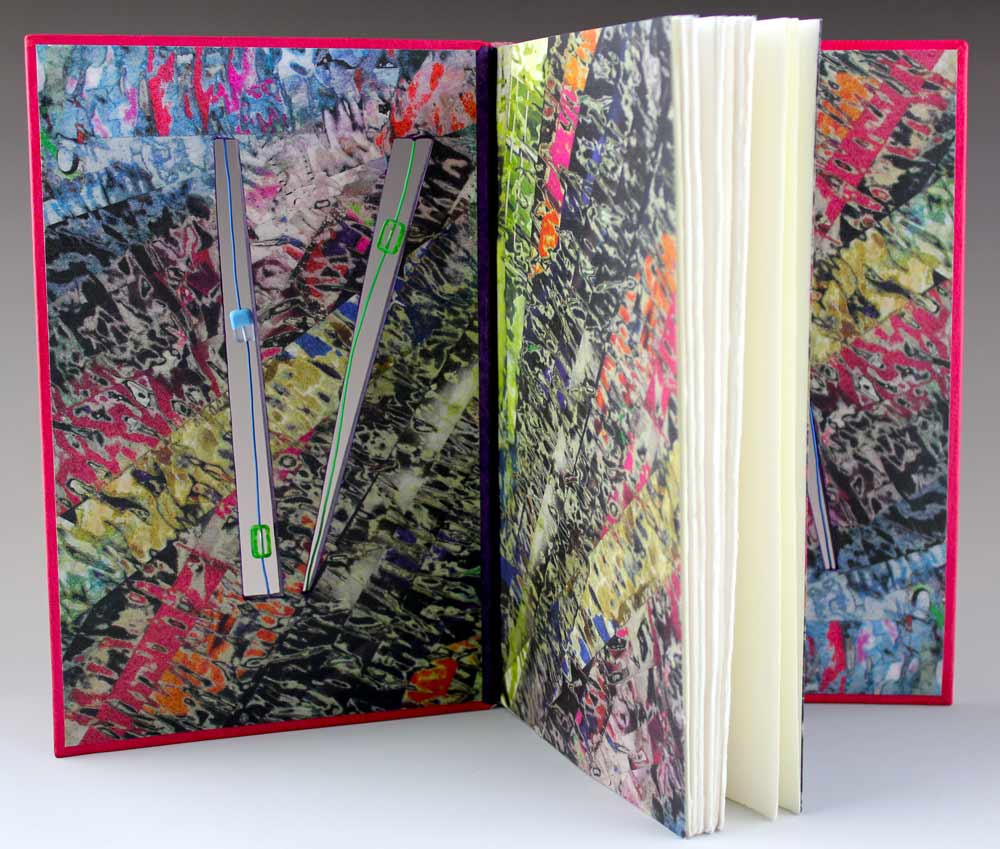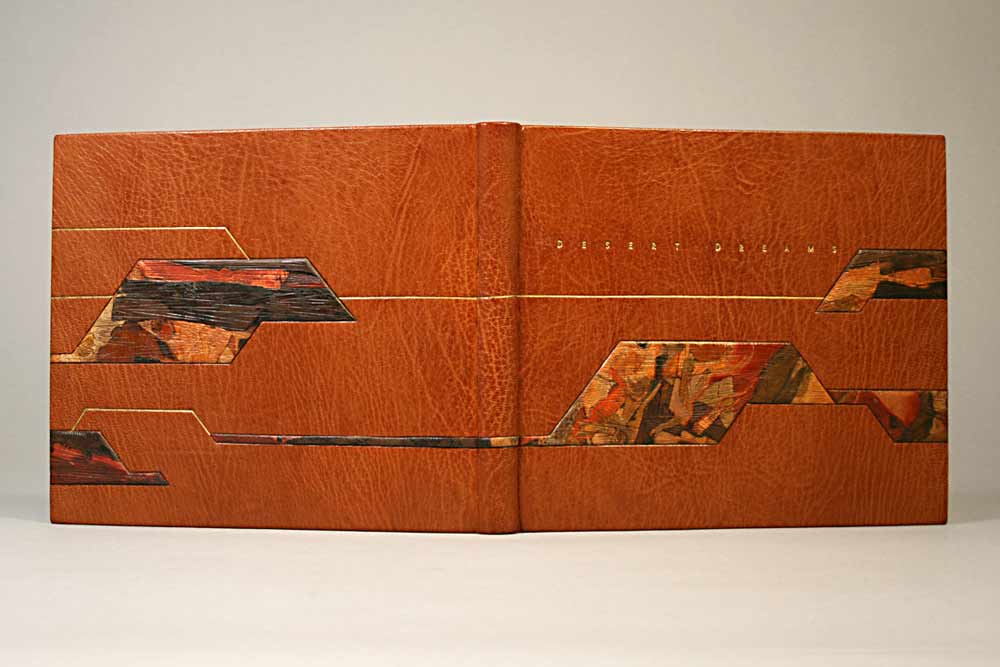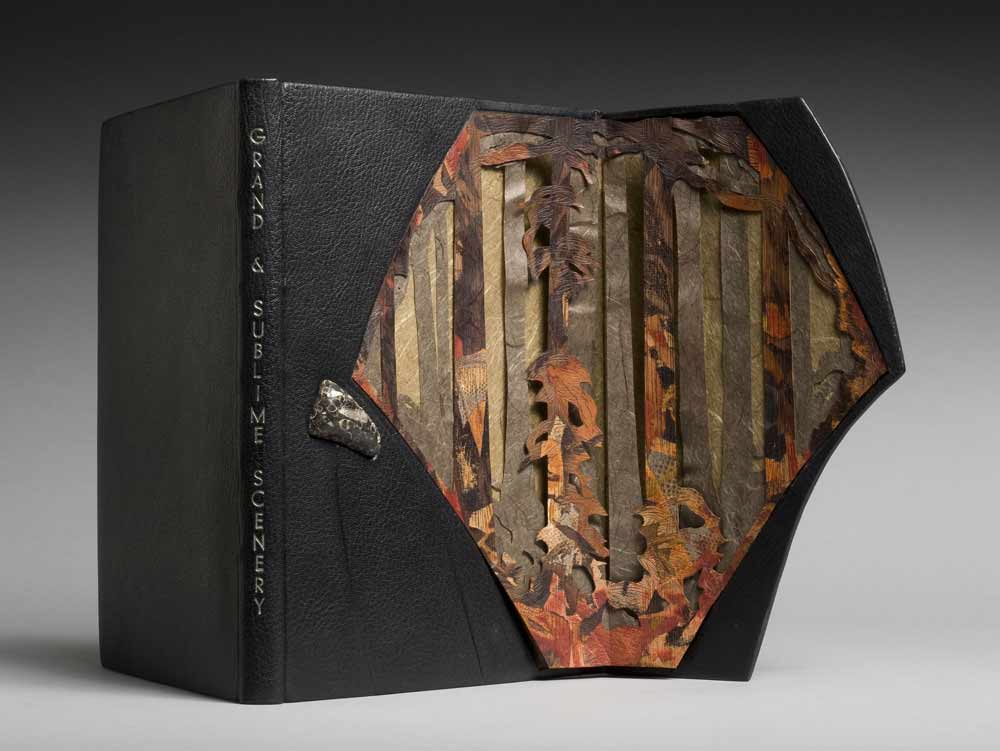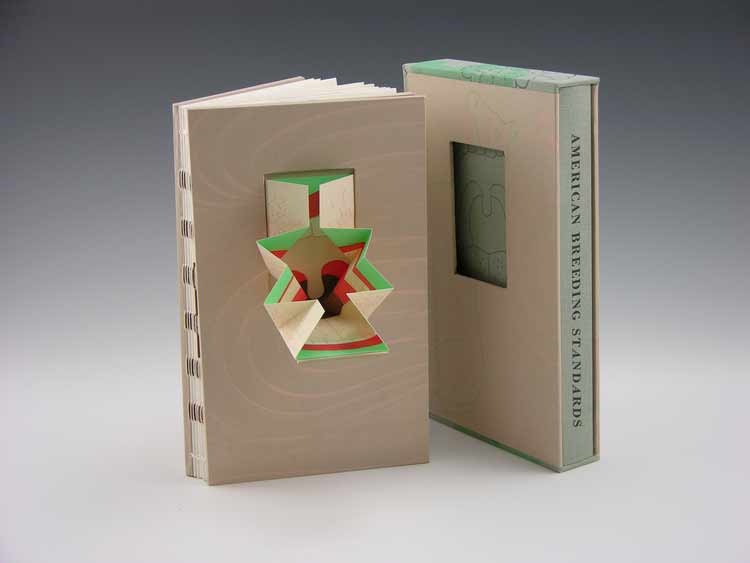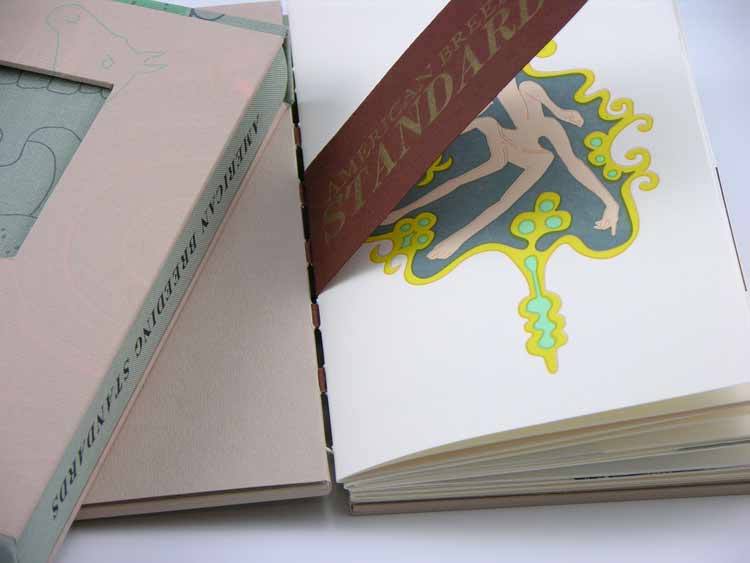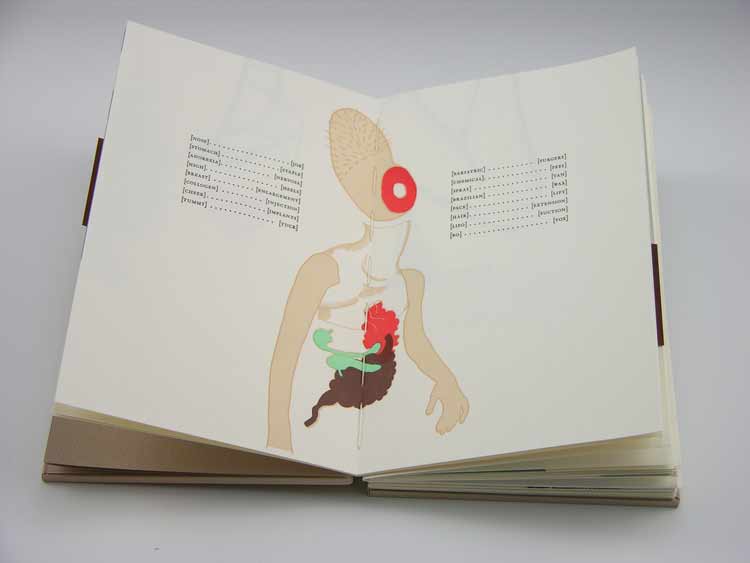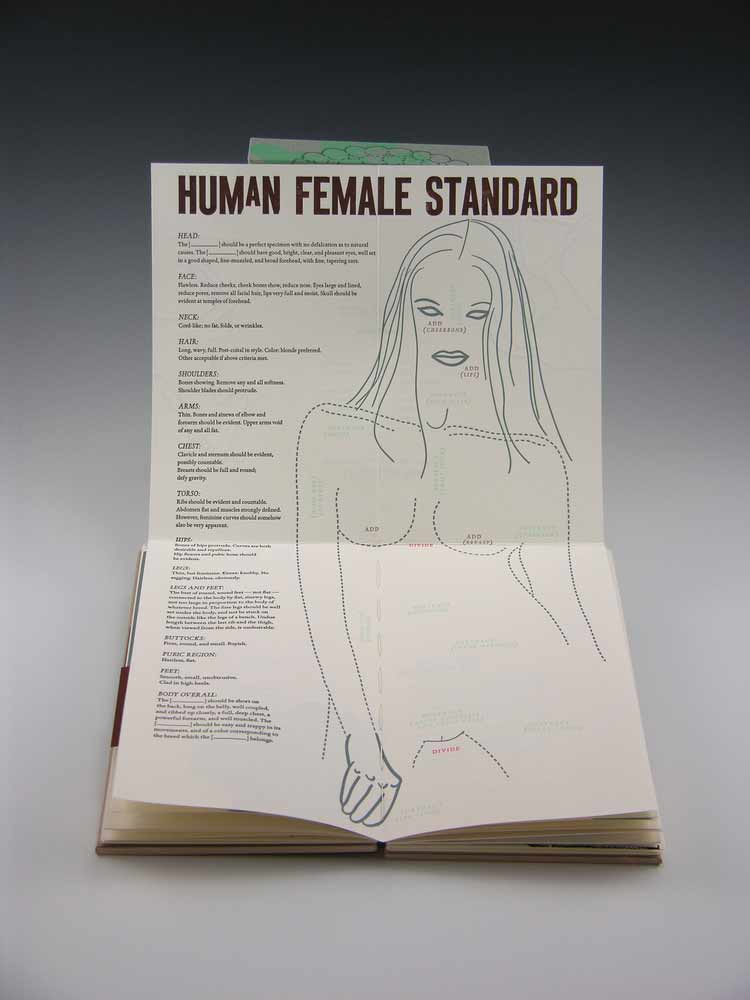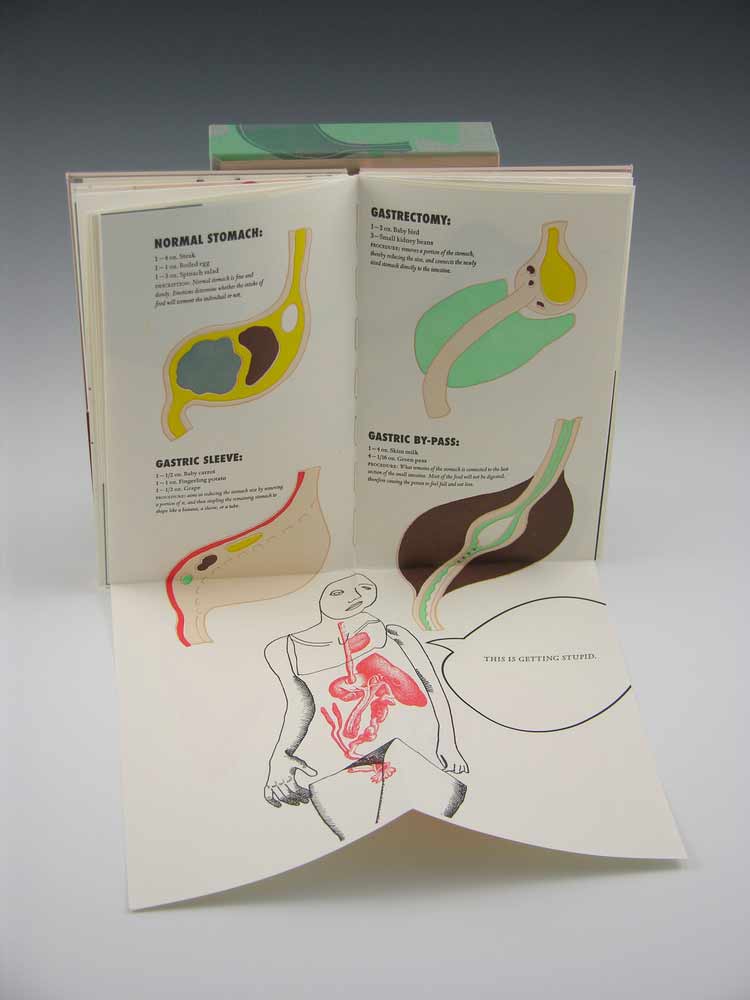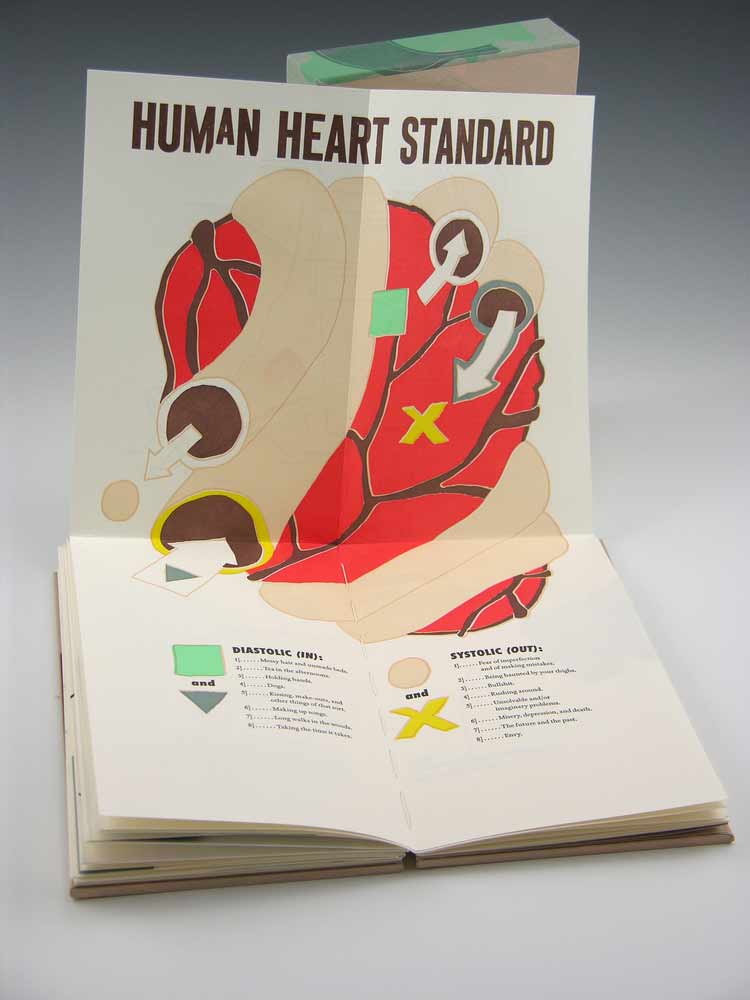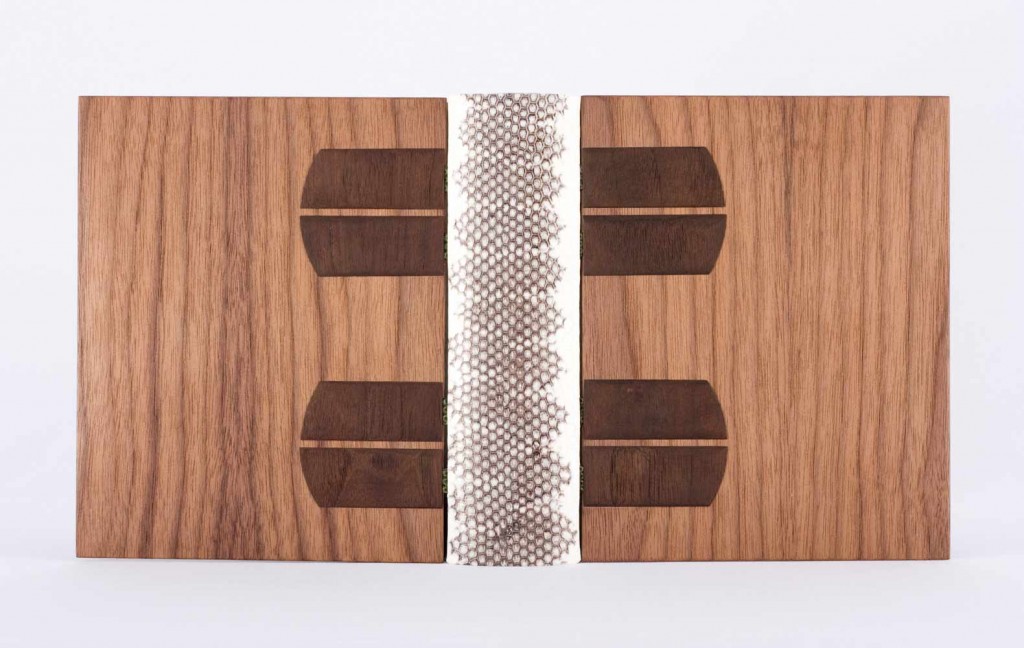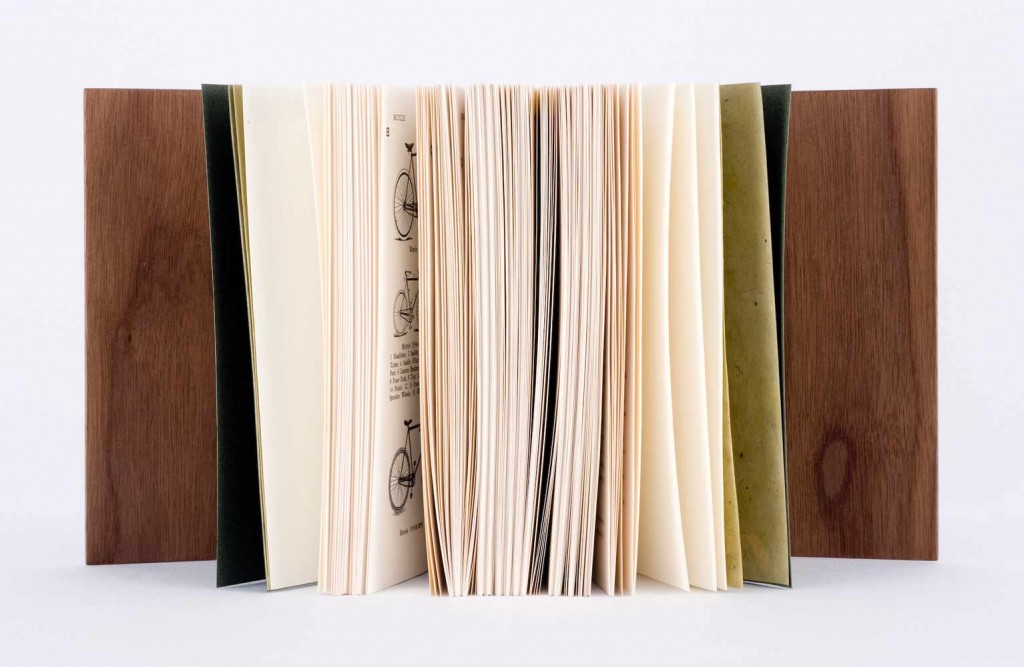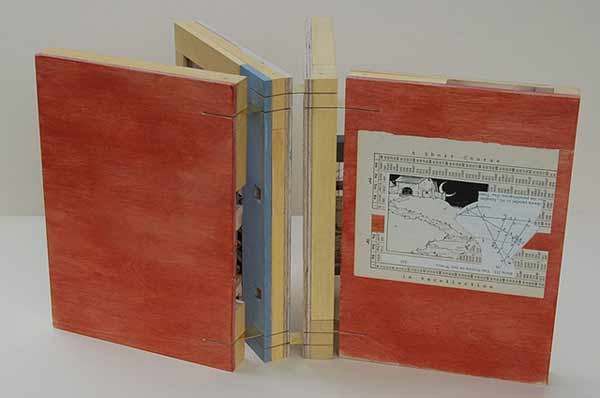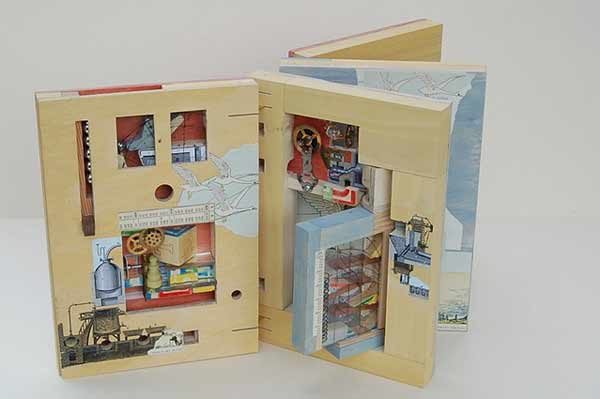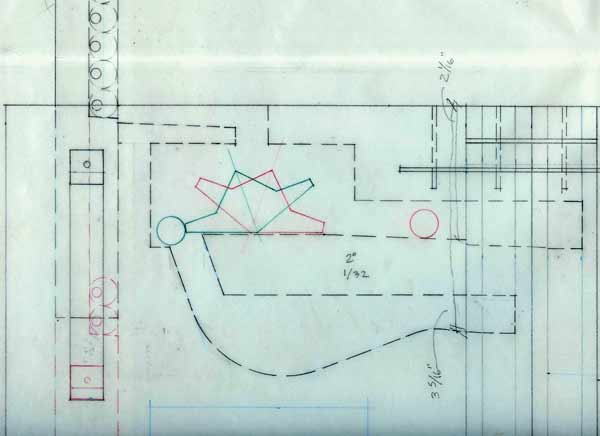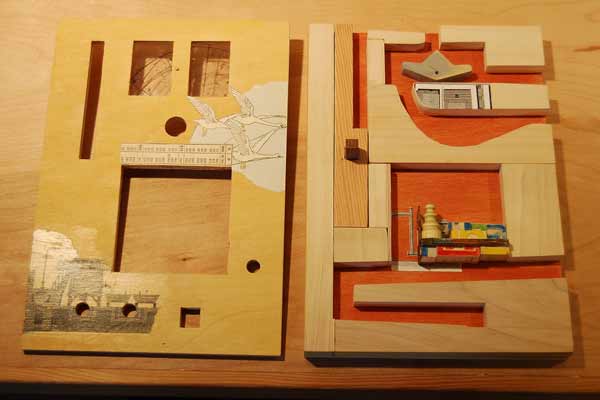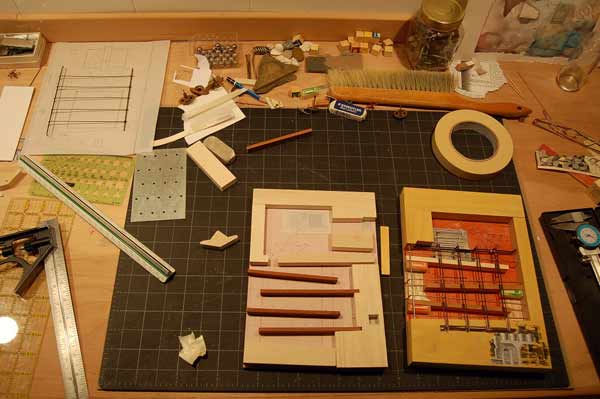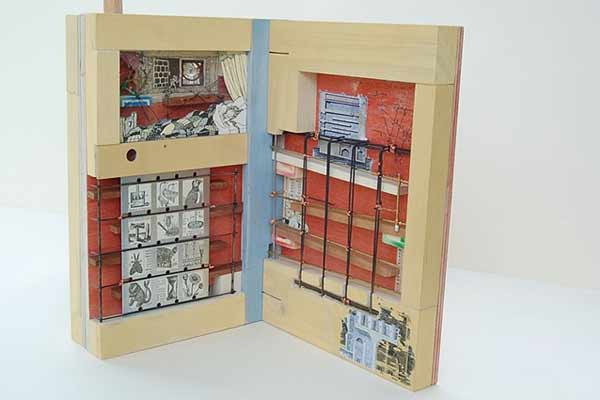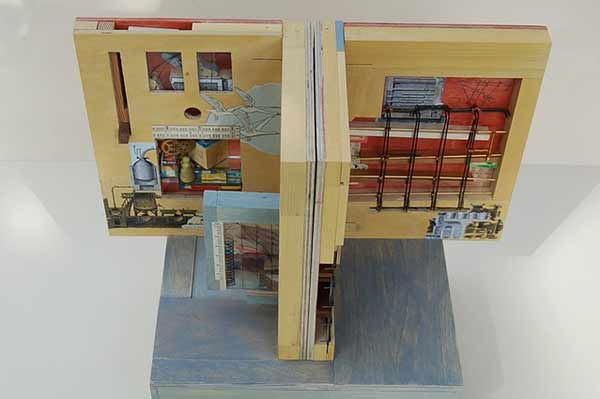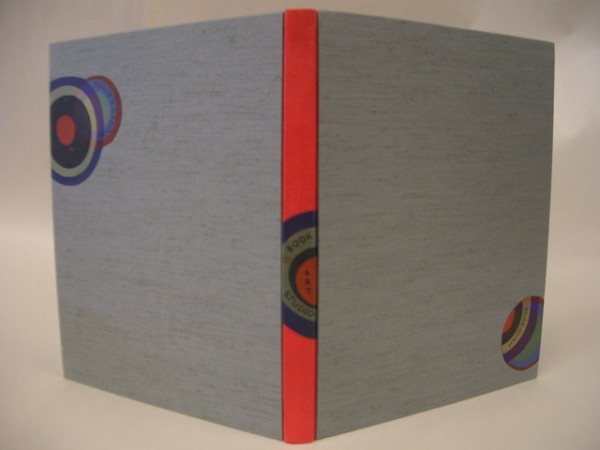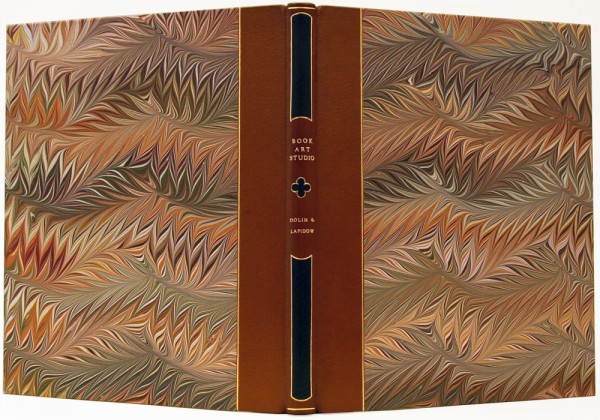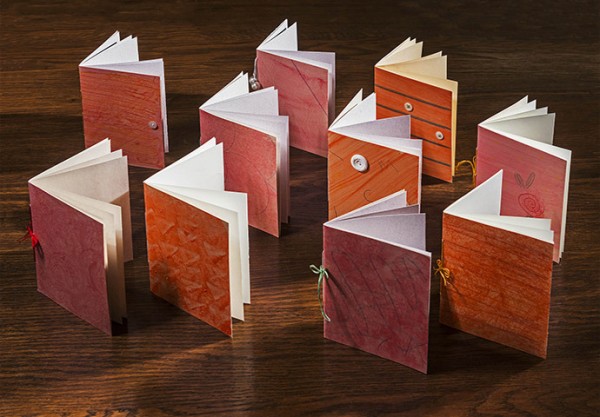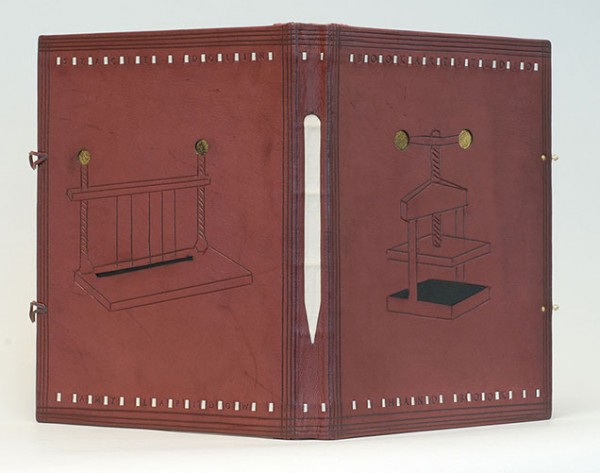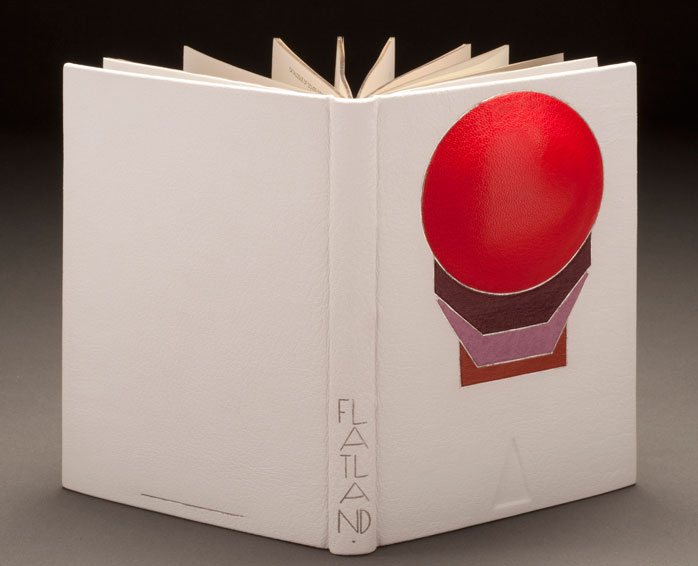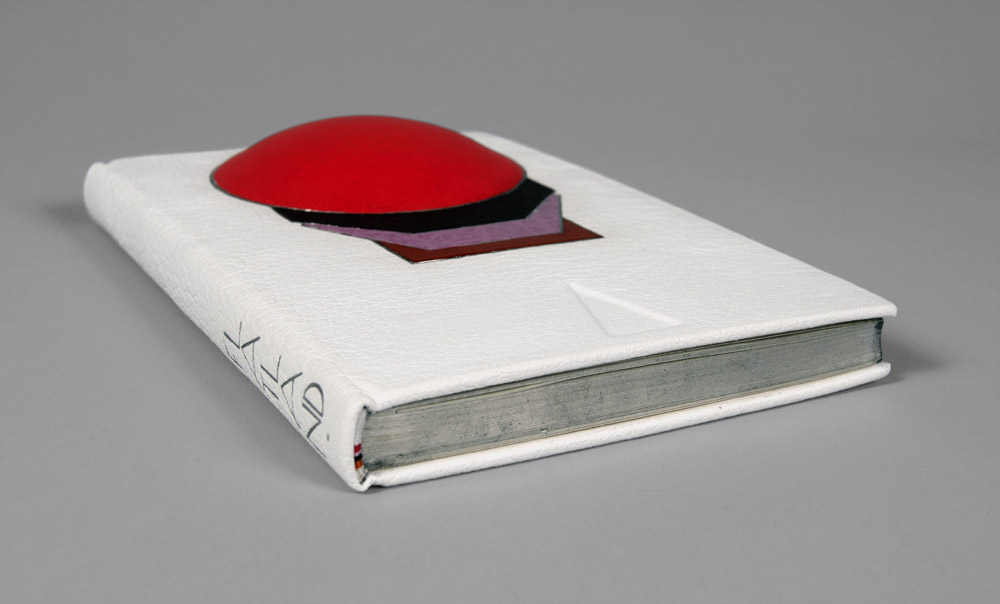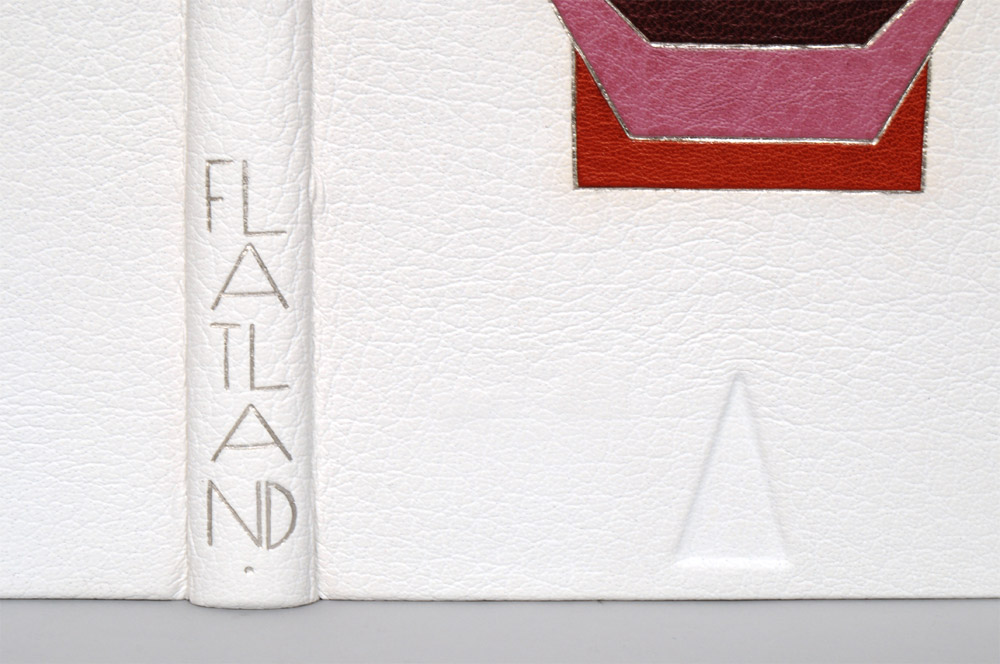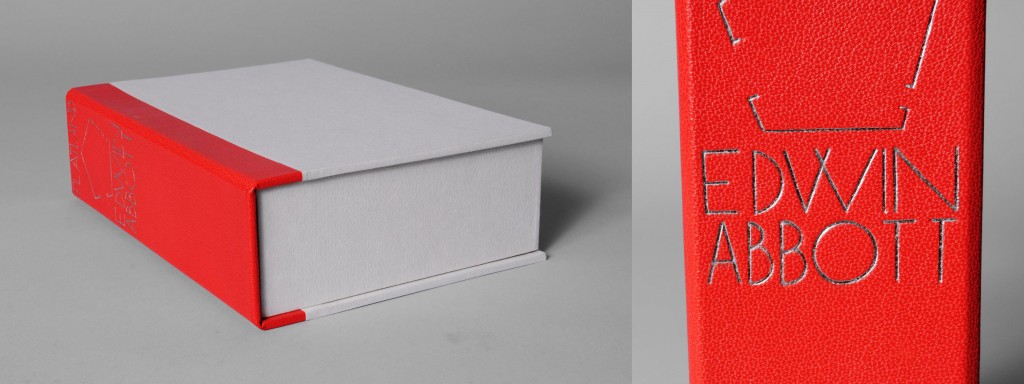In 2012, the Rocky Mountain Chapter of the Guild of Book Workers put on a juried set-book exhibition which was held in conjunction with the Standards of Excellence conference at the J. Willard Marriott Library at the University of Utah in Salt Lake City. The set-book, Fantasy and Nonsense, is a collection of poems from 19th century American poet James Whitcomb Riley with peculiar wood engravings by Berrot Hubrecht. The text was letterpress printed on handmade paper in an edition of 230 from Tryst Press.
The first prize went to Coleen Curry’s traditional French-style fine binding covered in a custom-dye pink Harmatan goatskin. Sewn on 4 cords with laced-in boards. The front and back cover cutouts have embedded electrical wires strung with floating glass beads. The decorative endpapers are made by Coleen; a collage made by laminating magazine strips, then sanding and painting the surface. The finished collage was then scanned and inkjet printed onto arches text wove. The bold color palette is a reflection of the whimsical nature of the poems and illustrations.
